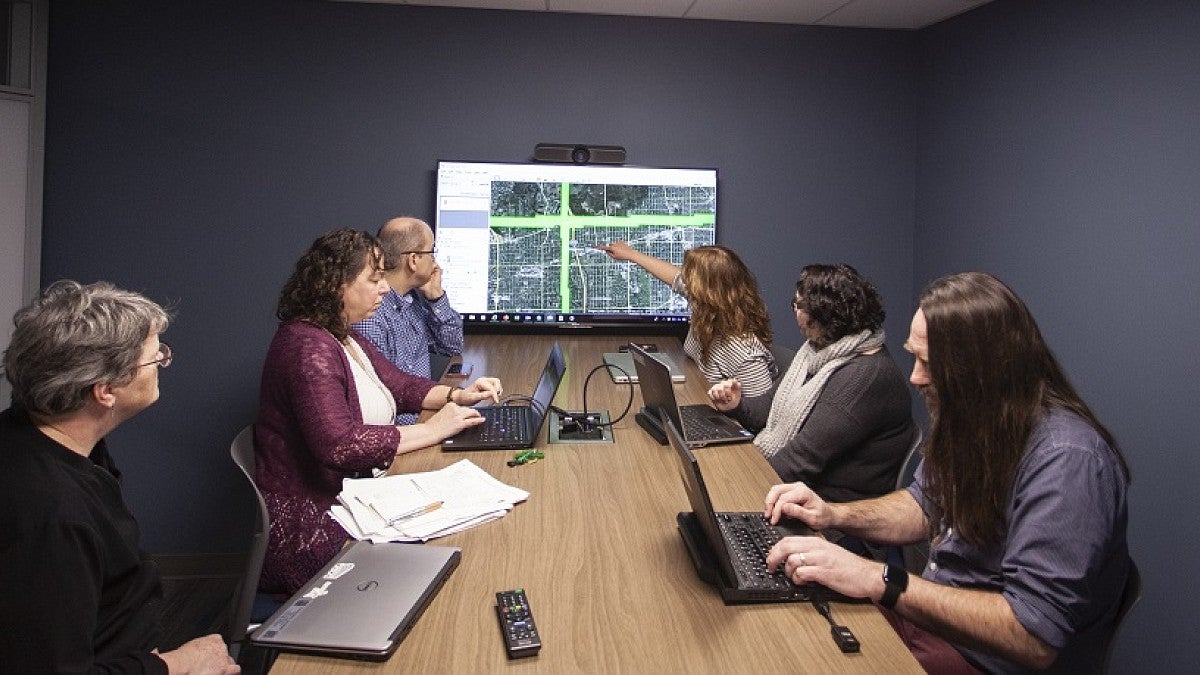Together with a team at the University of Idaho, librarians at the UO received a $49,919 digital humanities advancement grant from the National Endowment for the Humanities to develop new technology-focused teaching plans for humanities courses.
The grant project will support the teaching of basic coding, data documentation, presentation and website development through tutorials and classroom workshops throughout the rest of the current academic year.
At the UO, the project is led by librarians Kate Thornhill, Gabriele Hayden and Rayne Vieger. Thornhill and Hayden are using a digital software program called CollectionBuilder to teach students and faculty members how to interact with data in a comprehensive way.
The idea, Thornhill said, is to teach people from all academic disciplines the technical skills traditionally only taught in computer science classes but which are highly valuable in the job market.
“Students need to be taught those skills,” Thornhill said. “And it shouldn’t just be strapped to a computer science department. Everyone should have access to learning how to work with data and how to work with the internet.”
CollectionBuilder, which provides templates for building websites that showcase data collection, acts as a teaching tool. It allows easy access to what Thornhill calls “the guts” of a website or blog.
Beyond the user-friendly front end of typical website-builders like WordPress lies a complex world of coded data. Students who understand how to manipulate that data have an advantage in today’s increasingly competitive, technology-driven job market, Thornhill said.
“It lets students learn about what’s in the guts without having to take a whole bunch of coding classes,” she said.
Hayden, who specializes in research data management at the Knight Library, will be leading the development of CollectionBuilder workshops and tutorials. She and Thornhill will be working with undergraduate employees in the digital humanities to help create programs that show educators how to integrate CollectionBuilder curriculum into classrooms.
Eventually, Hayden hopes to share the teaching material she and her colleagues put together for the workshops with other institutions. Their work will conclude by June 2022, at which point she and Thornhill hope to share their work at regional and national conferences.
That way, Hayden said, community colleges and institutions with less available funding than the UO will be able to adopt CollectionBuilder lessons into their own curriculums.
“We want to spread the word among our colleagues and cohorts, which will make it a lot easier for them to adopt this and do it at their own institutions,” she said.
Hayden and Thornhill also will be working with English professor Mattie Burkert to integrate CollectionBuilder into her digital humanities classes this spring. Burkert teaches a two-term class sequence as part of the English department’s digital humanities minor, which she is working to redesign around the CollectionBuilder tool.
“I see it as an opportunity to teach some foundational information and technology skills that they will hopefully use whether or not they keep doing digital humanities,” Burkert said.
In addition to the classroom integration, the Knight Library will be launching a CollectionBuilder support workshop through the UO Digital Research, Education, and Media Lab,or DREAM Lab. Located on the first floor of the Knight Library, the DREAM Lab hosts regular workshops on digital humanities and data-related topics.
Starting winter term 2022, the lab will also offer technical and creative support to those interested in learning how to use CollectionBuilder.
“If there are folks that want to use CollectionBuilder for their own research, they can come chat with us and learn how to do that project design using CollectionBuilder as a database,” Thornhill said.
—By Cole Sinanian, College of Arts and Sciences


